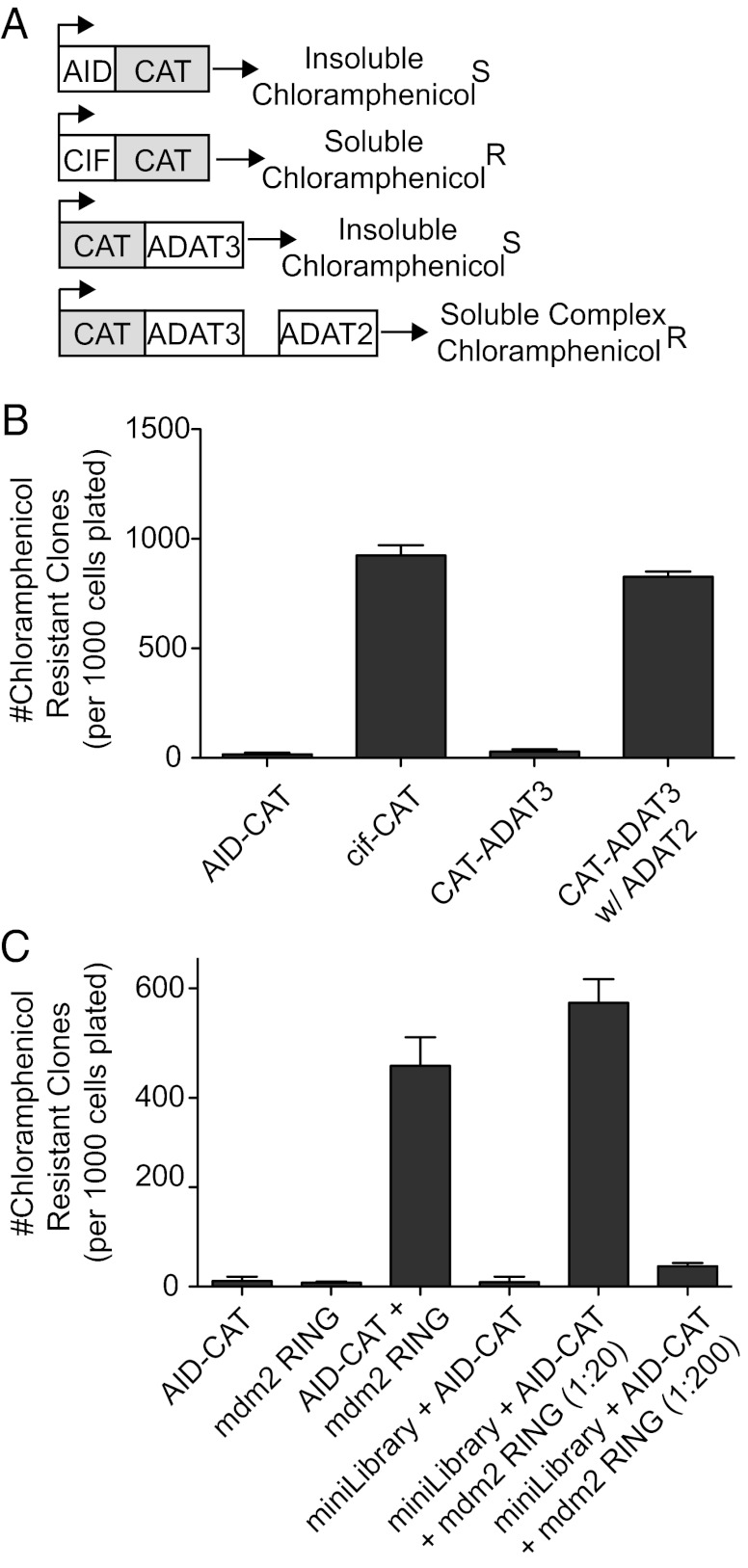Fig. 1.
A genetic assay that selects for the restoration of solubility to an insoluble protein. (A) A schematic depicts representative CAT fusion proteins. AID and AID-CAT are insoluble and, thus, produce chloramphenicol-sensitive cells; Cif and Cif-CAT are soluble allowing cells to be resistant to chloramphenicol; ADAT3 and ADAT3-CAT are insoluble unless coexpressed with ADAT2. (R, resistant; S, sensitive). (B) Plasmids carrying the indicated genes were transformed into BL21ai E. coli, plated on chloramphenicol containing plates under induction conditions. Resistant colonies were counted. Shown here are colony numbers obtained on LB plates containing 120 μg/mL chloramphenicol. (C) Chloramphenicol-resistant colonies after cotransformation of the indicated expression plasmids were counted. Coexpression of AID-CAT and the Mdm2 RING domain allowed for efficient survival on chloramphenicol plates. These interactions were revealed even when the Mdm2 RING plasmid was diluted 1:20 and 1:200 in a minilibrary of known noninteractors. For B and C, graphs represent the number of chloramphenicol resistant colonies per 1,000 cells plated.

